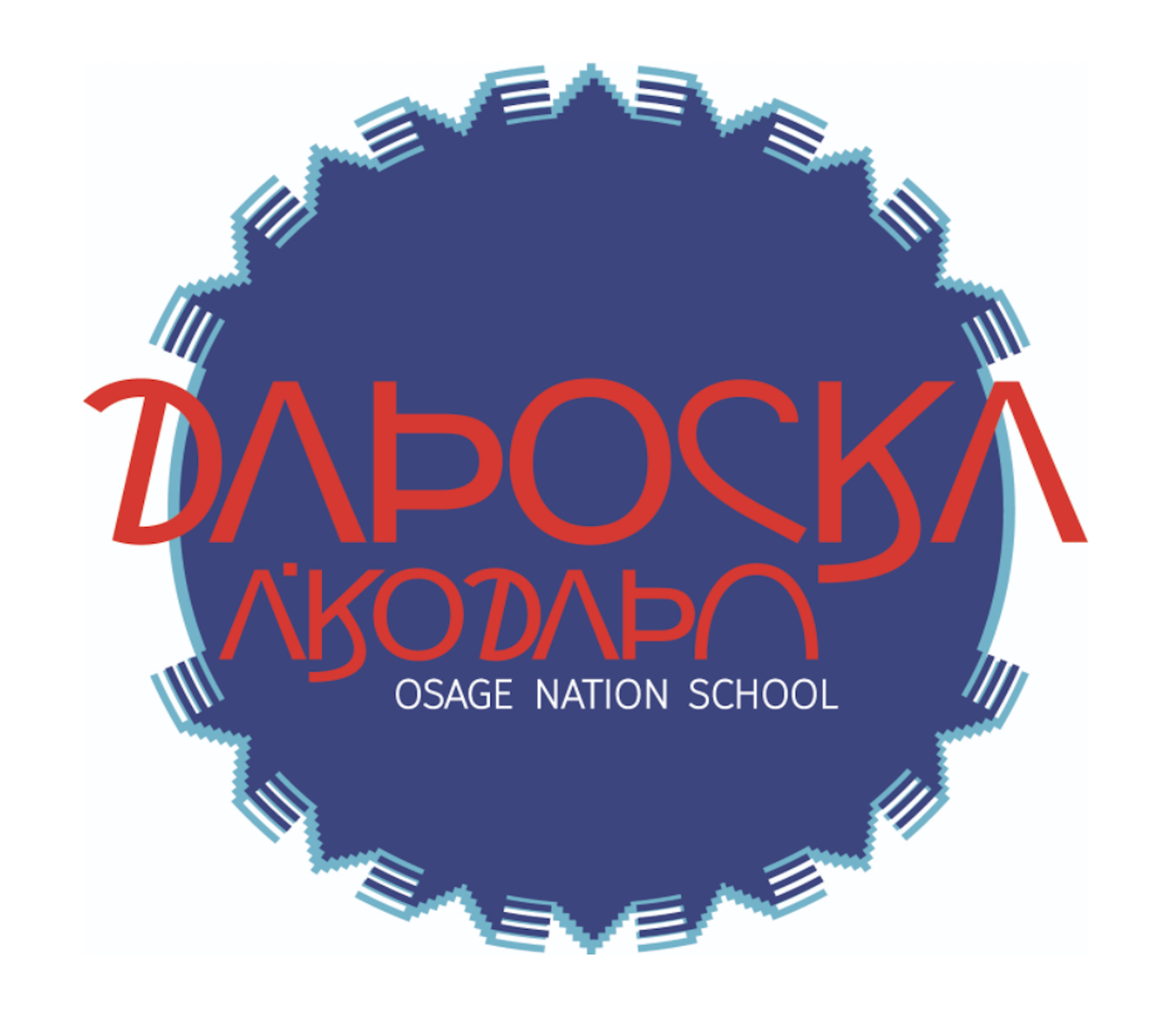
The logo for the Osage Nation's immersion school Daposka Ahnkodapi.


The logo for the Osage Nation's immersion school Daposka Ahnkodapi.
Clarification: An earlier version of this story said Tulsa Public Schools has three immersion elementary schools. There are two immersion elementary schools with three programs. Eisenhower Elementary School teaches both Spanish and French and Zarrow Elementary School teaches Spanish.
In normal circumstances, foreign language immersion instruction requires some classroom creativity to make it work.
That may mean developing worksheets or curriculum in-house, bringing in multiple guest speakers or figuring out the closest equivalent to “shark” in a language originally spoken thousands of miles from the nearest ocean in order to sing the popular kids’ song “Baby Shark” in Osage.
However, in the era of Covid-19 and distance learning, it is a whole new ballgame.
Located in Pawhuska, Daposka Ahnkodapi is the Osage Nation’s immersion school. It runs through fourth grade and has about 40 students enrolled.
The small private school started the year with in-person instruction, but like other schools around Oklahoma, had to pivot to distance learning more than once during the fall semester thanks to Covid-19.
“It’s the same as all the other schools,” headmaster Patrick Martin said. “I mean we’re just trying to do it in person preferably and then online when we have to.”
When classes are held in person, the Osage translations of “wash your hands” and other key preventative instructions are incorporated into the daily classroom routine. When the school has had to switch to distance learning, those instructions and lessons are getting worked into socially distanced home visits, Zoom calls, web-based apps, online trivia games and word games.
Charles Duty is a second grader at Daposka Ahnkodapi.
“It was kinda different,” he said. “I’m not used to going online. I liked it though.”
When the school has had to make the sudden switch to distance learning, the Duty family has tried to supplement language instruction by including Osage words and prayers at home, but as Shannon Shaw Duty, Charles’ mother, pointed out, it is not quite the same. Like many other immersion school parents across Oklahoma, she is not fluent in the language her child is studying.
“The hardest has been having to pivot on a dime,” she said. “I have to stay home from work. It’s hard to work from home and at the same time be their teacher. I can’t just leave them all alone. I do have to sit down with them, monitor and sometimes explain what they need to do. That takes away from my work day.”
To the east, the state’s oldest Indigenous language charter school is facing similar challenges.
Thanks to the pandemic, the Cherokee Nation’s immersion school in Tahlequah has not had in-person classes since March.
Curtis Washington has been at the school for 11 years in several different roles. In a normal year, his 10 sixth grade students would have half of their coursework in Cherokee and half in English to help them prepare for secondary school in a non-immersion setting.
While in distance learning, the students are still getting regular assignments, including spelling words and written translation projects in Cherokee. However, rather than build and expand those language skills, it’s been more of a focus on maintaining them until the students are able to be back in-person.
Washington said he keeps his Zoom room open during the day in case students need to pop in with questions or to work with them on pronunciation, but participation has been minimal at best.
“I think some of them aren’t even looking at their syllabary until I see them on Zoom,” he said. “I hate saying that but there are some kids like that. I take it as it comes, though. If that’s the best they can do right now, then that’s the best they can do.”
Indigenous language students are not the only ones having to think outside the box when it comes to bolstering their skills while staying safe.
The state’s second largest school district, Tulsa Public Schools, has 10 multi-language sites, including two immersion elementary schools. Combined, there are about 2,500 TPS students in multilingual classrooms with most learning either Spanish or French.
Prior to Covid-19, Amelia Beam-Thompson was in the Spanish language immersion program at Tulsa’s Zarrow Elementary. She still has a spot there, but with an immuno-compromised parent, she is doing fourth grade online this school year through Tulsa Virtual Academy.
Like Duty, Beam-Thompson said it’s been pretty different doing classes online this year. Instead of speaking and hearing Spanish all day at school, her language instruction is primarily condensed into a couple of hours, with her math and language arts classes conducted in English.
“I’m pretty used to my teachers speaking more Spanish to me,” she said.
Her parents, Sara Beam and Brian Thompson, agreed that their daughter’s education looks pretty different this year and has not been a full immersion experience.
However, as they pointed out, distance learning has allowed their fourth grader to go at her own pace and when needed, step away.
“She’s getting a more concentrated dose of it (Spanish) in those two hours,” Beam said. “So it seems like a fair enough trade.”
This COVID-19/education reporting is made possible through a grant from the Walton Family Foundation.